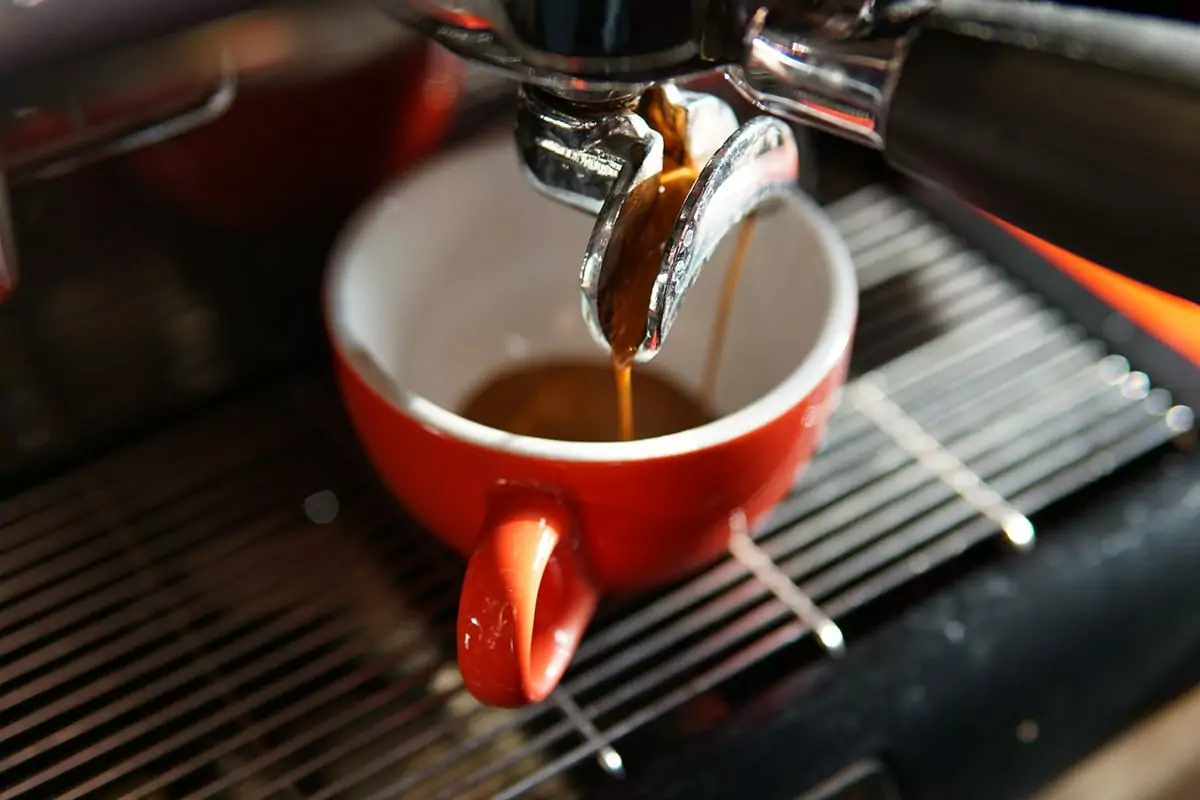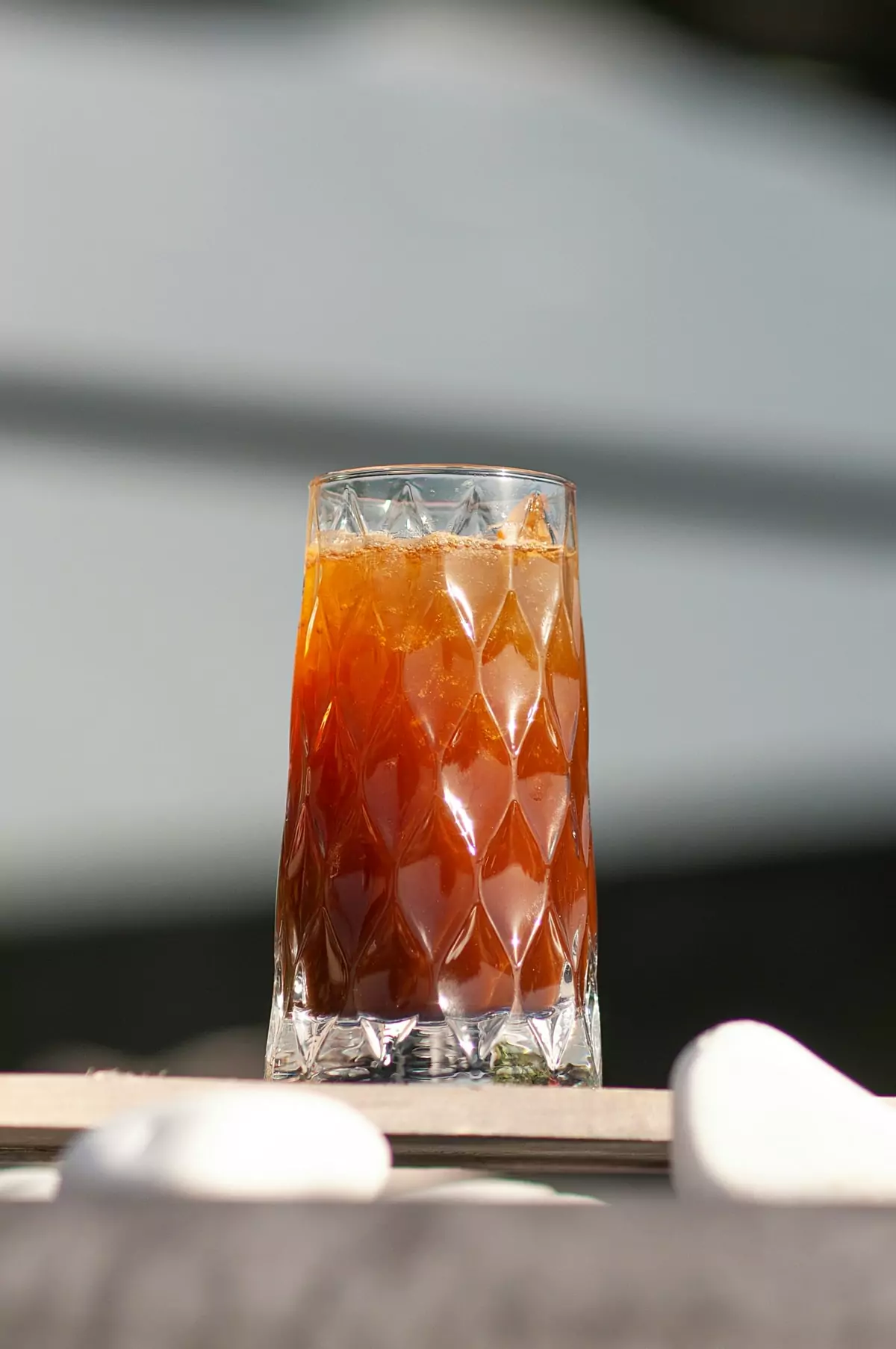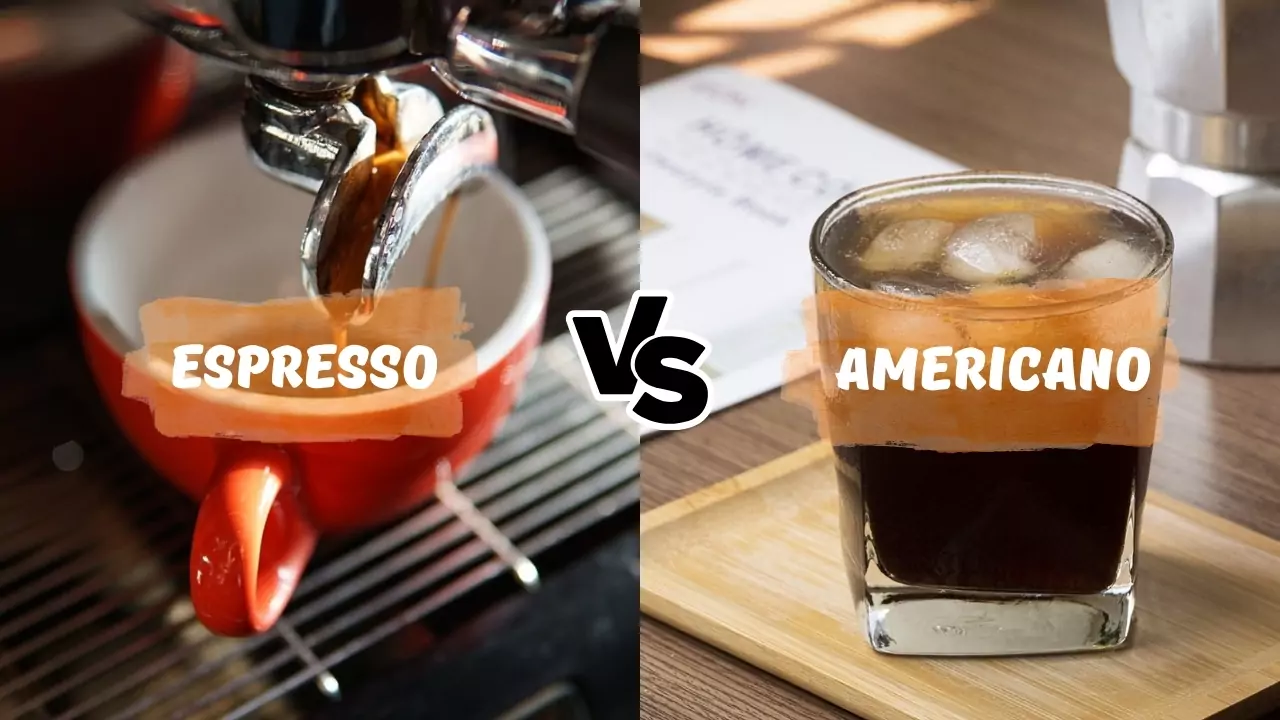Coffee is not just a beverage; it’s a ritual, a passion, and for many, a lifesaver. Among the myriad coffee options around the world, espresso and americano stand out not just for their unique flavors but also for their cultural significance and differences in preparation. While both drinks share a common coffee base, they diverge dramatically in method, taste, and even, health effects. This comparison which unfolds the subtleties of espresso and americano will help you make an informed choice based on your preferences. Each drink offers a distinct sensory experience, reflecting various traditions and coffee-loving communities globally.
Espresso is often considered the heart and soul of Italian coffee culture, a concentrated burst of flavor served in a small, stylish cup. On the other hand, the americano has roots extending back to World War II when American soldiers diluted their espresso in hot water to mimic the brewed coffee they were accustomed to back home. Both drinks boast devoted followings but are tailored to different palates and occasions.
In this article, you will discover the essential differences and similarities that separate espresso from americano across various aspects such as brewing techniques, flavor profiles, caffeine content, health considerations, and cultural significance. Whether you are a seasoned coffee aficionado or someone just embarking on your coffee journey, understanding these distinctions will enhance your coffee experience and appreciation.
Brewing Techniques
When it comes to the brewing techniques for espresso and americano, the ways in which these drinks are prepared reveal a lot about their inherent characteristics. At a glance, espresso requires specialized equipment and techniques that yield a concentrated and rich flavor profile. In contrast, an americano calls for a simple dilution process that offers a smoother taste. The differences between the two can be likened to the difference between a painted masterpiece and a diluted watercolor; one is bold and intense, while the other captures subtler nuances.
Espresso Brewing Process

Espresso
Espresso is created through a meticulous process that invokes precision. Here’s a breakdown of the core steps involved:
- Grinding: Coffee beans are ground to a fine consistency equivalent to table salt, crucial for espresso extraction.
- Tamping: The ground coffee is packed tightly in a portafilter, ensuring uniform extraction when brewing.
- Brewing: Water is heated to approximately 190°F (88°C) and forced through the coffee grounds at high pressure (typically around 9 bars), delivering a single shot of espresso in about 25 to 30 seconds.
These steps culminate in an intense shot of espresso that typically comes served in a small demitasse cup. This concentrated drink not only encapsulates the flavors of the coffee bean but also demonstrates the skill of the barista who brews it.
Americano Preparation Method

Americano
On the flip side, making an americano simplifies the process significantly:
- Brew Espresso: The starting point for an americano is the same as espresso, where an espresso machine is used to pull a shot.
- Adding Hot Water: After the shot is ready, hot water is added to the espresso in varying ratios often one part espresso to two parts hot water.
The beauty of an americano lies in its customizability. You can control how strong or diluted you want the drink, making it versatile for different times of the day and occasions. This process showcases how coffee aficionados have adapted espresso to create a drink that combines the rich essence of espresso while allowing for a more laid-back consumption.
Key Differences in Brewing Techniques
- Espresso Preparation: Requires specialized equipment, high-pressure water extraction, and fine grinding, leading to a concentrated flavor and rich crema.
- Americano Preparation: Involves adding hot water to espresso, offering a more diluted taste that retains some of the original espresso’s complexity.
Understanding these brewing methods is key to appreciating the unique experience each drink presents, and to recognizing how slight adjustments in preparation can yield dramatically different flavors.
Flavor Profiles
When discussing coffee beverages, the flavor profile becomes a focal point of comparison that can evoke deep personal preferences. Espresso and americano offer distinct experiences, akin to a symphony and a mellow acoustic performance. The flavors of espresso burst forth with intensity, while the americano allows for a gentler exploration of those same notes, creating a more accessible experience.
Espresso Flavor Characteristics

Espresso
Espresso is characterized by its bold and robust flavor profile. Here are key points regarding its taste:
- Richness and Concentration: The brewing method produces a concentrated shot with an intense, full-bodied flavor.
- Bitterness and Sweetness: A well-crafted espresso achieves a delicate balance between bitter and sweet, often showcasing hints of chocolate, caramel, or nuts.
- Texture: With a smooth, velvety texture due to crema, espresso presents a rich mouthfeel that envelops the palate.
- Flavor Notes: Depending on the type of coffee beans and roast levels, espresso can reveal flavors ranging from dark chocolate to fruity undertones, creating a complex tasting experience.
Americano Taste Comparison

Americano
In contrast, the americano brings forth a different flavor experience:
- Milder Taste: The addition of hot water tempers the intensity of espresso, leading to a smooth and approachable flavor.
- Flavor Nuances: The dilution allows for the rise of subtler coffee notes, which makes it accessible for those who may find espresso overly harsh.
- Consistency and Cleanliness: Each sip tends to feel lighter and less heavy, ideal for extended sipping and conversations.
Comparison Between Espresso and Americano Flavor Profiles
| Espresso | Americano | |
|---|---|---|
| Intensity | Strong and rich | Milder and smoother |
| Flavor Balance | Complex interplay of bitterness and sweetness | Emphasizes subtler flavors |
| Mouthfeel | Thick and syrupy | Medium-bodied, easier to drink |
In essence, espresso offers the coffee lover an intense, complex chorus of flavors, while the americano introduces the beauty of these flavors through a softer lens. Both drinks cater to different preferences, enriching the overall coffee experience.
Caffeine Content
The caffeine content in espresso and americano is an essential topic for coffee drinkers to grasp, particularly when it comes to assessing their caffeine intake. Espresso delivers a concentrated hit, while an americano’s caffeine level can vary based on preparation.
Caffeine Levels in Espresso
A typical single shot of espresso (about 1 ounce or 30 ml) contains approximately 63 milligrams of caffeine. The high caffeine concentration arises from the densely packed grounds and the pressure applied during brewing.
Caffeine Levels in Americano
An americano, on the other hand, usually incorporates one or two shots of espresso, mixed with hot water. For instance:
- An 8-ounce Americano made with a single espresso shot (63 mg caffeine) totals approximately 63 milligrams of caffeine; however, if brewed with a double shot, it can rise to 126 milligrams.
| Espresso (1 oz) | Americano (8 oz) | |
|---|---|---|
| Caffeine | 63 mg | 63 – 126 mg (depending on shots) |
| Concentration | Higher (63 mg/oz) | Lower concentration (varies with water) |
A guiding takeaway is that while espresso packs a punch in a smaller package, the americano offers the flexibility of caffeine content through customizable espresso shots and water ratios. Caffeine distribution translates to a more diluted drink that can still lift your spirits throughout the day.
Serving Size and Presentation
Presentation adds another layer to the espresso and americano experience. Each drink comes with specific serving practices that enhance the overall enjoyment.
Standard Espresso Serving Size
Espresso is typically served in small demitasse cups, with a standard serving size of 1 to 1.5 ounces (30 to 45 ml). This limited quantity is designed to maintain the rich flavors and allow for a concentrated sipping experience. The small cup embodies the essence of espresso drinking culture, often highlighting ritualistic consumption in Italian traditions.
Americano Cup Size Variations
Conversely, an americano has more flexibility regarding size. It can be served in larger mugs or cups, commonly ranging from 4 to 16 ounces (120 to 473 ml). This increase in volume can be enticing, especially for those who wish to leisurely sip their coffee, making it perfect for casual settings. This flexibility in serving size showcases its adaptability, accommodating different drinking habits and preferences.
| Espresso | Americano | |
|---|---|---|
| Serving Size | 1 to 1.5 oz (30-45 ml) | Typically 4 to 16 oz (120-473 ml) |
| Cup Type | Demitasse | Mug or larger coffee cup |
In conclusion, the serving size not only reflects the inherent differences in taste and drinking style but also resonates with our cultures and rituals surrounding coffee consumption. Espresso’s concentrated nature commands attention, while an americano invites you to relax and unwound.
Health Considerations
When considering health implications, both espresso and americano offer potential benefits and drawbacks, largely influenced by their caffeine content and preparation methods.
Health Effects of Drinking Espresso
- High Antioxidants: Espresso contains a significant amount of antioxidants, which help reduce oxidative stress and may lower the risk of various chronic diseases.
- Cognitive Benefits: The caffeine present in espresso can enhance alertness, mood, and cognitive function. Studies suggest regular coffee consumption may reduce the risk of neurodegenerative diseases.
- Metabolic Impact: Regular consumption can increase metabolic rates, aiding in weight management.
- Heart Health: Moderate coffee intake has been associated with lower risks of certain heart diseases.
However, there are considerations:
- Caffeine Sensitivity: Individuals sensitive to caffeine may experience insomnia, jitters, and anxiety after consuming espresso due to its higher caffeine concentration.
- Acid Reflux: The acidity could lead to digestive discomfort for some, necessitating moderation.
- Addiction and Withdrawal: Regular consumption may lead to caffeine dependency, with withdrawal symptoms manifesting if not ingested.
Health Effects of Drinking Americano
- Caffeine Levels: While an americano typically contains caffeine, the dilution allows for a gentler effect on the central nervous system, making it easier for sensitive individuals to enjoy.
- Reduced Acidity: Due to the addition of water, an americano can be more digestive-friendly than espresso for those with sensitive stomachs.
- Hydration Aspect: With a more significant water content, you may reap hydration benefits, helping you meet your daily fluid intake.
- Low-Calorie Options: Americano offers a coffee experience without the added sugars and cream that many coffee drinks contain, making it an appealing choice for those counting calories.
In summary, both drinks have potential health benefits and harmful considerations, primarily driven by caffeine levels, acidity, and individual tolerance. Balance and moderation remain critical for enjoying coffee while minimizing adverse health impacts.
Popularity and Cultural Significance
The cultural significance of espresso and americano is deep-rooted in their distinct stories and consumption rituals.
Espresso in Coffee Culture
Espresso is synonymous with Italian coffee culture and has grown to become a global standard. It represents not just a beverage but a way of life. Italians typically drink espresso rapidly while standing at a bar, showing the ritualistic nature of coffee consumption and promoting community engagement. Espresso also serves as the foundation for many popular coffee beverages, from cappuccinos to lattes. The popularity of espresso in coffee shops is a testament to its importance, making it a staple of coffee culture, particularly in Europe.
Americano’s Popularity Among Coffee Drinkers
The americano, while originating from necessity, has gained popularity in its own right, particularly in America. It resonates with those who prefer a longer coffee experience while still appreciating the depth of flavors that espresso has to offer. The convenience and versatility of ordering an americano make it a go-to choice for many, embodying a casual and relaxed coffee culture that aligns with fast-paced lifestyles. Americano has therefore become a vital component of coffee menus across cafes worldwide, appealing to drinkers seeking a familiar, yet enhanced coffee experience.
Comparison of Popularity and Culture
| Espresso | Americano | |
|---|---|---|
| Cultural Roots | Deeply Italian; ritualistic | Originated in WWII; adaptive |
| Consumption Style | Quick; social | Laid-back; customizable |
| Global Appeal | Standard in Europe; growing globally | Popular in America; casual |
In conclusion, the differences in popularity highlight unique cultural practices where espresso exemplifies tradition, crafting, and quick enjoyment, while coffee enthusiasts lean towards the americano for a more relaxed, personalized experience. The evolution of both drinks narrates a rich tapestry of coffee history influenced by varying tastes across the globe.
Customization and Variations
Coffee is profoundly personal, and the ability to customize each drink enhances the overall experience. Both espresso and americano present opportunities for personalization that cater to individual tastes.
Customizing Espresso Drinks
Espresso serves as the backbone for a variety of coffee beverages, allowing for extensive customization:
- Milk Variations: Espresso forms the base for lattes, cappuccinos, and flat whites. Adding different types of milk can alter taste and texture.
- Syrups and Flavorings: You can add flavored syrups such as vanilla, caramel, or spices like cinnamon to enrich flavor profiles.
- Temperature Choices: Experimenting with hot versus iced espresso drinks allows exploration of flavor at different temperatures.
- Strength Variation: Adjusting the number of shots gives you control over taste intensity, enhancing or softening flavors based on preference.
Variations of Americano
For an americano, customization options also abound:
- Espresso Shots: Adding more espresso shots can amplify flavor and intensity.
- Water Volume and Temperature: Adjusting the amount of hot water impacts strength and mouthfeel, allowing for a tailored experience.
- Flavored Variations: Incorporate flavored syrups for a unique twist or even add cream or milk to enhance the texture without overpowering the espresso flavor.
- Iced Americano: This refreshing variation is wonderful in warm weather, appealing to those who enjoy their coffee chilled.
Differences Between Espresso and Americano Customization Options
| Espresso | Americano | |
|---|---|---|
| Customization Scope | Milk types, syrups, and shots | Espresso shots, water, and temperatures |
| Beverage Variations | Lattes, cappuccinos | Iced americanos, flavored americanos |
| Flavor Manipulation | Strong intensity adjustments | Milder strength, various flavor infusions |
Both espresso and americano can be highly personalized, reflecting the drinker’s preferences. Understanding the customization options allows coffee enthusiasts to tailor their beverage according to mood, flavor, or occasion, enhancing both enjoyment and appreciation.
Preferences and Recommendations
Each drink, whether espresso or americano, caters to a uniquely individual experience. Understanding when to choose each can elevate your coffee selections.
When to Choose Espresso
- Desire for Intensity: Choose espresso if you appreciate bold, rich coffee flavors that pack a punch.
- Quick Energy Boost: Go for a shot of espresso when you need a rapid infusion of caffeine without the volume.
- Short Sipping Enjoyment: Opt for espresso when you want a quick, indulgent treat rather than a leisurely experience.
- Pairing with Food: If you are having a rich dessert or meal, espresso complements these flavors beautifully.
- Coffee Crafting Experience: For those who relish the art of coffee-making, nothing compares to the freshly brewed shot of espresso.
When to Choose Americano
- Preference for Milder Taste: Select an americano if you appreciate smoother, more gentle coffee flavors.
- Longer Drinking Sessions: The americano is perfect for those who enjoy sipping slowly, whether while reading or socializing.
- Versatility in Strength: Choose an americano when you want flexibility, adjusting the ratio of water to espresso based on preferred intensity.
- Subtle Flavor Exploration: For those interested in subtle coffee notes without overwhelming intensity, an americano opens doors to nuanced flavors.
- Daily Enjoyment: An americano is ideal for any time of day morning or afternoon without the risk of caffeine overload.
Ultimately, whether you choose espresso or americano, understanding your preferences and the characteristics of each drink will ensure a more fulfilling coffee experience. Embrace the art of coffee and let your taste buds guide you!
Both espresso and americano offer distinct yet complementary experiences that enrich the coffee culture around the world. Their preparation methods, flavor profiles, caffeine content, and rich traditions allow coffee lovers to savor different aspects of this beloved beverage. Whether you engage in the intense ritual of sipping a straight shot of espresso or prefer the gentle wave of flavor in an americano, each drink provides a unique path to coffee enjoyment. The choice between them, influenced by personal preference, occasion, and desired intensity, opens a world of possibilities for coffee lovers everywhere.

